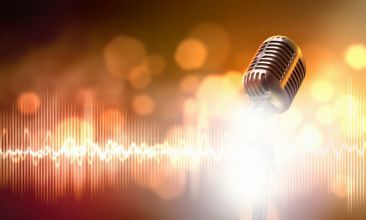The middle 8, often referred to as the bridge, isn't just a structural detour—it's a crucible where musical alchemy transforms the familiar into the extraordinary. It's the moment your song transcends repetition, dives into emotional depths, and resurfaces forever altered. This isn't just about avoiding monotony; it's about crafting a narrative arc within a miniature world, a journey within a journey, tailored to resonate with a broad audience.
The Heartbeat of Contrast: Why the Bridge Matters in Pop
In the fast-paced world of pop, where hooks and instant gratification reign, the bridge is your secret weapon. Strategically placed after the second chorus, it disrupts the expected, offering a moment of surprise and depth. It shifts the emotional landscape, allowing you to explore hidden corners of your song's story, keeping listeners engaged and emotionally invested. Whether you're strumming your first chords or crafting complex harmonies, the bridge is your canvas.
Beginner's Corner: Your First Steps into Bridge Building
What's a Bridge? (Simple Definition):
The bridge is the part of the song that's different from the verses and choruses. It's a change of pace, a new idea.
Basic Techniques to Try:
- Lyric Change: Write four new lines of lyrics that tell a different part of the story or offer a new perspective.
- Tempo Change: Try playing the same chord progression slower or faster.
- Chord Change: Change one of the chords to a minor version of that chord (e.g., C major to C minor).
- Simple Rhythm: Try adding a clap pattern to the beat.
- Simple Chord Progression: Try writing a bridge using the chords Am, G, C, F.
Listen and Learn (Simple Bridges):
Listen to songs with very noticeable bridges, like Hey Jude by The Beatles or Livin' on a Prayer by Bon Jovi. Notice how the bridge changes the feel of the song.
Sculpting Sonic Landscapes: Advanced Bridge Techniques
Harmonic Excavations
While pop often thrives on simpler harmonic structures, clever harmonic shifts can elevate your bridge. Consider using a relative minor or major key change to create a subtle shift in mood. Explore the use of suspended chords or add a 7th chord for a touch of sophistication. (Advanced: Dive into modal interchange, borrowing chords from parallel modes, or introduce secondary dominants to create tension.)
Think about the emotional weight of each chord choice. A sudden shift to a minor key can add a sense of vulnerability, while a major key change can create a feeling of uplift.
Rhythmic Tapestries
Rhythm isn't just a beat; it's a language. Experiment with subtle rhythmic variations, such as adding syncopation or shifting the placement of the snare drum. A well-placed breakdown or a sudden tempo change can create a dramatic effect. (Advanced: Weave intricate polyrhythms, layering different time signatures, or employ metric modulation for smooth tempo transitions.)
Think about how silence can be used as a rhythmic tool. A well-placed pause can be just as powerful as a drum fill.
Lyrical Alchemy
The bridge is your narrative turning point. Introduce a contrasting perspective, revealing a hidden truth or a moment of vulnerability. Use imagery that clashes with the rest of the song, creating a sense of disorientation or revelation.
Melodic Detours
Craft melodies that are both contrasting and cohesive. Don't just change the notes; change the phrasing, articulation, and emotional delivery. (Advanced: A melody that uses a different scale within the song's key can add a sense of exoticism or mystery.)
Echoes of Mastery: Analyzing Bridge Craft in Diverse Genres
Pop Powerhouses
- Beyonce - Love on Top: Multiple key changes create exhilaration and build emotional intensity.
- Carly Rae Jepsen - Run Away with Me: The synth-driven bridge transforms the song’s dynamic.
- Taylor Swift - Out of the Woods: The frantic-feeling bridge heightens the song’s tension.
- Kate Bush - Running Up That Hill (A Deal With God): Emotional depth is enhanced through melodic and harmonic shifts.
- Panic! At The Disco - Bohemian Rhapsody: A theatrical, multi-sectional bridge turns the song into a mini-epic.
Beyond Pop
- Jazz: Explore intricate harmonic shifts in Miles Davis’s bridges, where modal explorations create a sense of improvisational freedom.
- Progressive Rock: Analyze the rhythmic complexity of a King Crimson bridge, where polyrhythms and shifting time signatures create tension.
- Classical Music: Listen to how composers like Beethoven used modulations to unexpected keys to build drama.
The Collaborative Forge: Refining Your Bridge with Wavecolab
Beyond Feedback: Collaborative Exploration on Wavecolab
- Time-specific commenting allows collaborators to pinpoint precise moments in your bridge for targeted feedback.
- Version control lets you experiment with multiple bridge variations, comparing different versions side-by-side.
- Seamless collaboration ensures your bridge is not only innovative but also resonates with your target audience.
Emotional Resonance Testing
- Share different versions and gather reactions through comments. Does it evoke the intended emotion? Does it create a sense of anticipation or resolution?
- Wavecolab’s organizational tools keep track of feedback, ensuring no valuable insights are lost.
Glossary
- Modal Interchange: Borrowing chords from parallel modes.
- Polyrhythms: Layering different time signatures.
- Thematic Counterpoint: Introducing a new idea that challenges or complements the song's main theme.
The Bridge as a Catalyst
The middle 8 is not a mere transition; it's a catalyst. It's the moment your song transforms, leaving a lasting imprint on the listener’s soul. Embrace the challenge, explore the possibilities, and forge bridges that resonate with emotional truth—perfected with the help of Wavecolab.



